How to grow beetroot
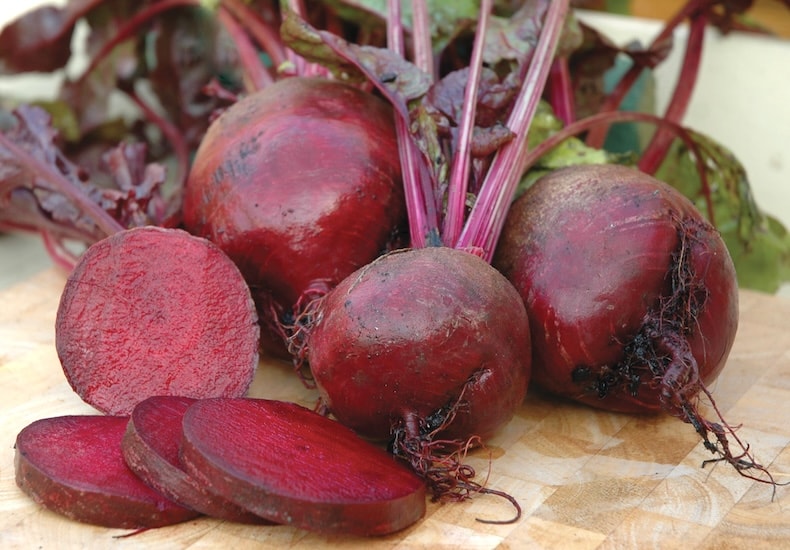
Beetroot 'Boltardy' is an RHS AGM variety with excellent bolt resistance
Image: Beetroot 'Boltardy' (Globe) from Thompson & Morgan
Beetroot is a versatile vegetable that’s easy to grow, takes up very little space and comes in a range of beautiful hues. From traditional rich purple roots through to white, yellow, orange and pink varieties, this vibrant vegetable brings an intense burst of colour and flavour to any meal.
Whether you want to sow your own beetroot seeds or get a head start with trays of plug plants, here’s how to grow your own beets.
This article was checked and updated on 18 January 2024.
Why grow beetroot?
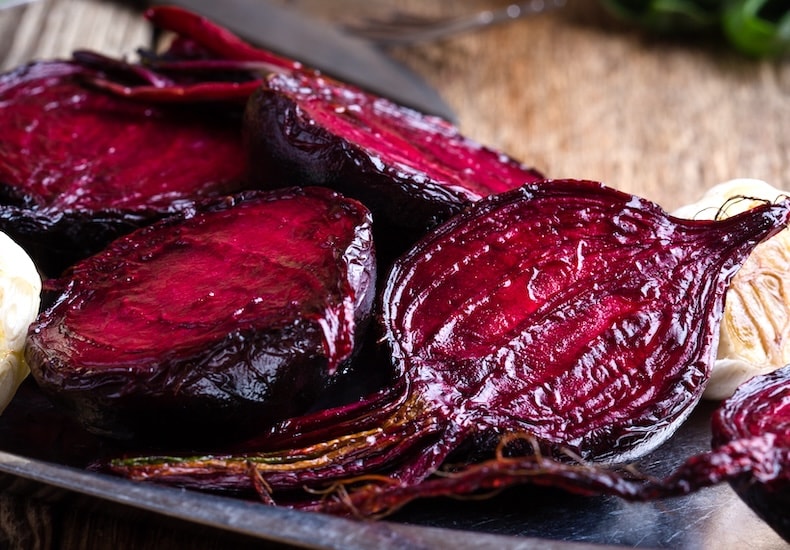
Enjoy whole roasted beetroot as an accompaniment to salad or as a side dish
Image: Beetroot 'Jolie' F1 from Thompson & Morgan
A row of beetroot takes up very little space in a veg patch, and can also be grown in containers of multi-purpose compost on a sunny patio or balcony. Packed with antioxidants, carbohydrates, potassium and folic acid, it’s one of the healthiest vegetables you can eat. Slow roasted, boiled or pickled, the intense earthy flavour lends a delicious depth to soups, tray bakes, dips, stews and more. The roots are just as good when eaten raw, and the sweeter notes work beautifully when blitzed into smoothies or shaved into salads. And if you’ve never tried baking with beetroot, you’ve missed a trick! Be sure to save some of your crop for a homemade chocolate and beetroot cake and prepare to be amazed.
Nothing is wasted with this versatile crop; the red-veined leaves of your beetroot plants are also edible. Pick when young and tender to liven up salads and treat mature leaves in the same way as spinach or chard.
Where to grow beetroot
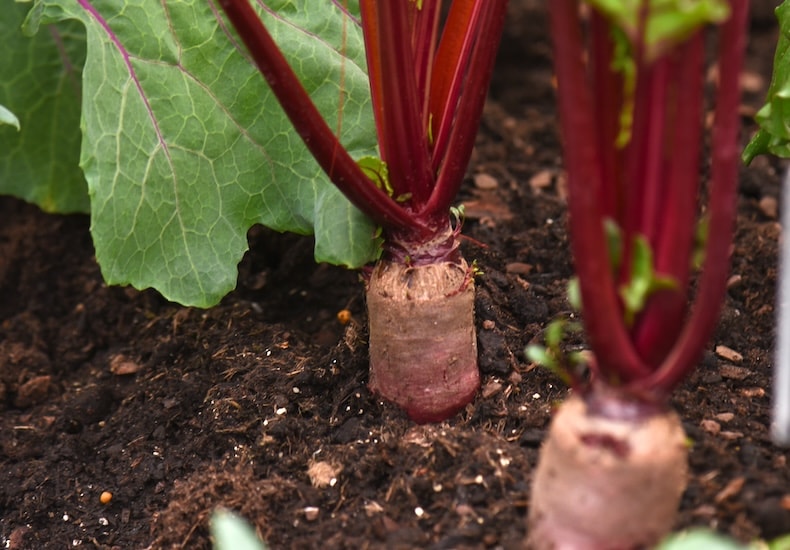
Cylindrical beetroot is a great space saver when grown in beds or containers
Image: Beetroot 'Alto' F1 Hybrid from Thompson & Morgan
Beetroot performs best in full sun, and prefers to be grown in free-draining soil that’s high in nitrogen and has plenty of organic matter worked in.
Prepare the soil two weeks ahead of sowing, digging in a high nitrogen feed. For an easy, one-off application, feed the soil with incredicrop for 7+months coverage. Alternatively, use bone meal or chicken manure pellets, but make a second application midway through the season.
How to sow beetroot
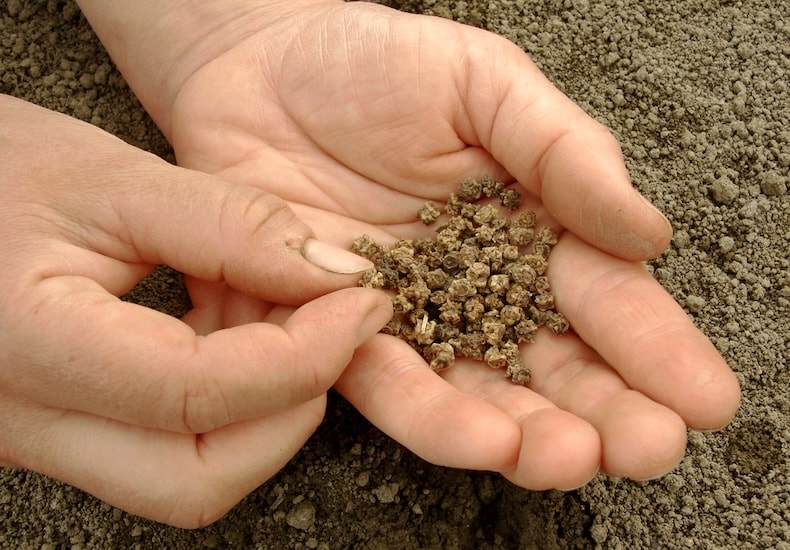
If sowing indoors, beetroot seeds can be sown from late February
Image: Shutterstock
You can direct sow beetroot seeds every few weeks from April to July for a regular supply of roots throughout the summer. In as little as 7 weeks they will reach the size of a small golf ball, but you can leave them to grow for about 10-12 weeks when they will have swelled to cricket ball size.
Beetroot seeds are relatively large and easy to handle. Make a shallow drill, about 2.5cm deep, water the soil, and drop the seeds about 10cm apart. Leave 30cm between each row. When they’re big enough to start harvesting, pull every other beetroot to allow the remaining roots more space to grow. Some gardeners deliberately sow more thickly in the row so they can thin out plants to use as salad leaves.
If you want to get off to an early start, you can sow your seeds indoors from late February. Warm the soil outside with cloches before planting out in March, and continue to grow your plants under cloches until the weather warms up.
Alternatively, try starting off your indoor seeds in module trays, dropping two or three into each cell. When the soil is warm enough outside, transplant these clusters into the soil leaving about 15cm between each group. They won’t have space to grow very large, but you can harvest them as baby veg while they are small, tender and sweet.
If you want a crop especially for winter storage, make a final sowing 12 weeks before winter frosts in your area so that the roots have time to develop into a good size. Larger roots store better than smaller ones. The last sowing time for beetroot is usually around mid-August for UK growers, in order to beat the first frosts. Because beetroot is a cool weather crop, August sowings will need plenty of water to prevent the young seedlings withering in the summer heat.
When to harvest beetroot
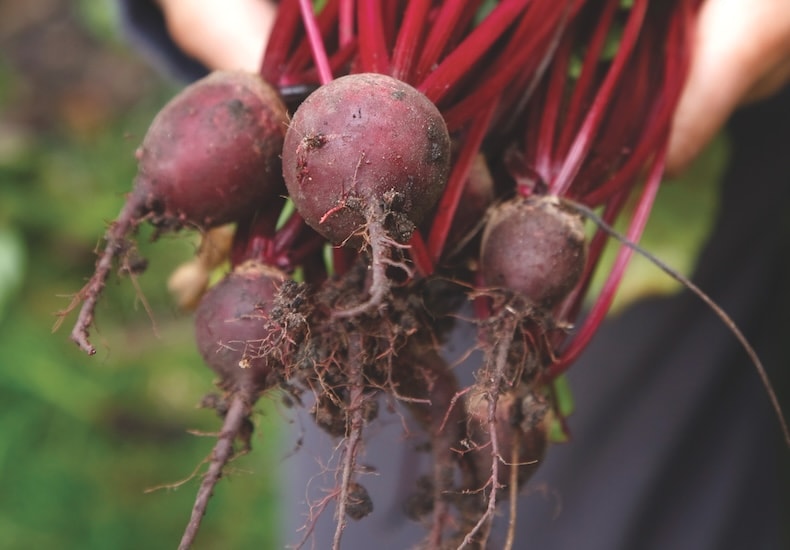
Make sure you harvest your beetroot earlier, rather than later as the roots can turn woody if left alone
Image: Beetroot 'Pablo' F1 Hybrid from Thompson & Morgan
Roots can be lifted at any time from June to October once they’ve reached a minimum 2.5cm (1") diameter. As mentioned, plants can be grown on for around 12 weeks in order to enjoy cricket-ball-sized roots for roasting and baking. Left much longer, they can turn woody, so it’s better to lift and store, rather than allow them to keep growing.
Beetroot is shallow rooting and should easily lift with a gentle pull to the foliage. In heavy soils a trowel may be needed, but be careful not to slice into the roots and reduce their storage life. If the surrounding roots are disturbed during lifting, simply firm back in and water.
To store beetroot over the winter, twist off the foliage and place the roots in a box of compost or dry sand in a cool, frost-free space. Provided they’re undamaged, larger beetroots should keep for several months.
Most popular T&M beetroot varieties to try

Cut open beetroot ‘Chioggia’ to reveal unusual stripy flesh
Image: Beetroot 'Chioggia' - Kew Vegetable Seed Collection from Thompson & Morgan
Experienced gardeners know their stuff, and these popular beetroot varieties are consistently at the top of our best-selling list. If you want to try something new, this is a good place to start.
- Beetroot ‘Boltardy’ - a traditional variety with evenly deep coloured roots. Good resistance to bolting makes it ideal for an early sowing.
- Beetroot ‘Rainbow Beet’ - a fun mixture of different colours to brighten up meal times.
- Beetroot ‘Red Ace’ F1 - large quality roots. F1 vigour makes this a good choice for poorer or drier soils.
- Beetroot ‘Detroit 2 Crimson Globe’ - an improved variety replacing the ever popular Detroit. Rich maroon roots with good flavour.
- Beetroot ‘Rubidus’ - for those that can't wait for the first crop of the season, this is the choice for you. A week earlier to crop than Boltardy, with virtually no threat of bolting.
- Beetroot Moneta’ - the best option for the lazy gardener, no thinning required! Beetroot 'Moneta' will produce bumper crops of smooth, tasty roots, and hardly any will go to seed.
- Beetroot ‘Pablo’ F1 - a top quality RHS AGM variety producing smooth-skinned, round roots with a dark red skin.
- Beetroot ‘Alto’ F1 - the first F1 cylindrical beetroot, producing large, long roots. A great space saver, allowing more plants per row.
- Beetroot ‘Boldor’ - an improved golden variety, producing sweet colourful roots that make an unusual addition to stir fries. Better seed emergence than older golden varieties.
Looking for more information about growing beetroot and chard? Head over to our dedicated hub page for a wealth of helpful advice.
Return to
Other quick links

Written by: Kris Collins
Kris Collins works as Thompson & Morgan's communications officer, making sure customers new and old are kept up to date on the latest plant developments and company news via a wide range of media sources. He trained in London's Royal Parks and has spent more than a decade writing for UK gardening publications before joining the team at Thompson & Morgan.Sign Up For Exclusive Special Offers




© 2024 Thompson & Morgan. All rights reserved. A division of Branded Garden Products Limited.
Sign up for exclusive offers!



